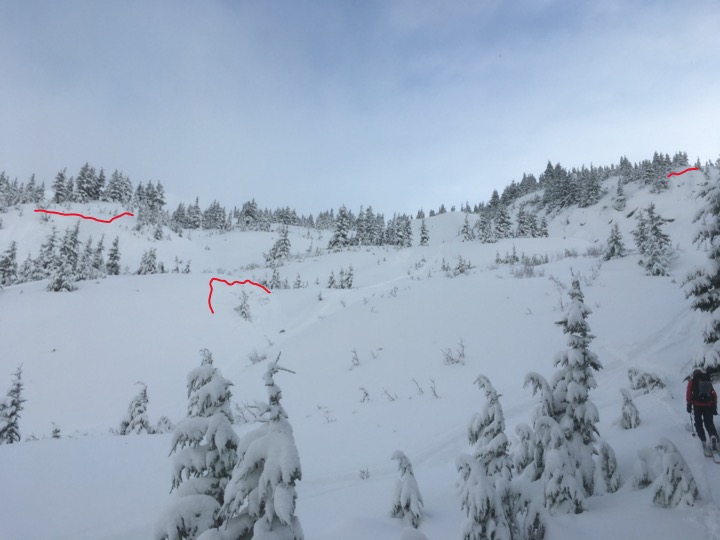Viva La Niña! Winter is off to a promising start. However, caution is advised. There is a long winter ahead. Don’t let early season stoke get the best of you! Around 2′ of snow (2.0″ of SWE) has fallen in the mid to upper elevation terrain in Girdwood Valley and Turnagain Pass since Friday afternoon. Unfortunately this snow fell on weak surface snow (small facets and surface hoar) and there is weak snow near the ground (more on this in Avalanche Problem 2). In addition, there were strong sustained winds Friday evening into Saturday morning. Observers yesterday reported all the signs of instability. There were both natural and human triggered avalanches, large whumpfs and shooting cracks. This included avalanches large enough to bury a person in the Tincan Trees.
Light snow is falling this morning but there is a bit of a break forecasted between storms today. Don’t let a window of improving visibility lure you into bigger terrain. Human triggered avalanches are likely today. With the current snowpack structure there is the potential for avalanches to be triggered remotely. It’s a day to carefully evaluate terrain and consequences if an avalanche does release and pay attention to other groups around you. With more snow and strong winds expected again tonight and tomorrow, this is the time to be patient, the snowpack will need time to adjust to all this loading.
As a reminder, here are the Red Flags to look for:
– Recent avalanches
– Whumpfing (collapsing) of the snowpack
– Shooting cracks

New snow easily failing on the weak old snow interface. 11.21.20. Photo: Andy Moderow

Multiple avalanches on Tincan. 11.21.20. Photo: Tully Ward-Hammer



